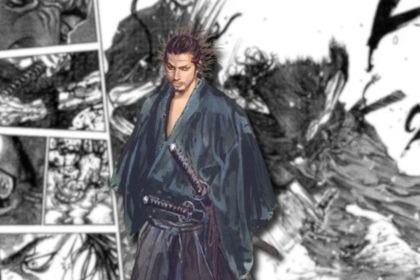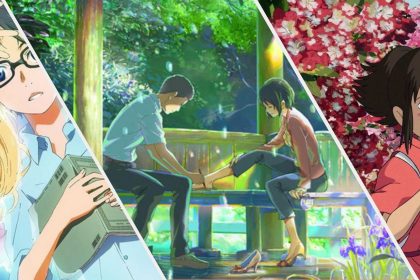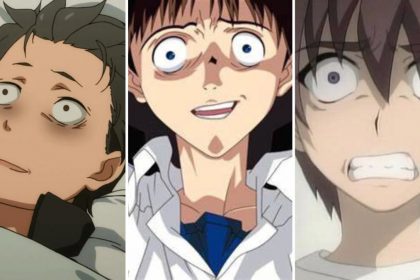The world of manga and anime has witnessed a significant evolution in the nature of the shonen protagonist, the central character who drives the narrative in stories targeted at young boys. Traditionally, shonen protagonists were portrayed as strong, determined individuals with ambitious goals, often overcoming challenges to become stronger. However, in recent years, the portrayal of shonen protagonists has undergone a transformation, with an emphasis on emotional intelligence, complex motivations, and collaboration. This article explores the changing nature of the shonen protagonist and delves into the representation of masculinity and femininity in these characters.
The Shonen Protagonist: Traditional Traits and Evolving Characteristics
Traditional Traits
In the world of traditional shonen series, the protagonist is characterized by their unwavering strength and determination. They embark on a journey to achieve their goals, facing numerous challenges along the way. These characters serve as role models for young boys, exemplifying traits such as resilience, perseverance, and a never-give-up attitude. Classic shonen series like Dragon Ball and One Piece showcase protagonists who embody these traditional traits, inspiring generations of readers.
Evolving Characteristics
In recent years, shonen protagonists have seen a shift in their characteristics, highlighting emotional intelligence and empathy. Modern shonen series focus on the protagonist’s emotional growth and their ability to understand and connect with others. Characters like Naruto Uzumaki from Naruto and Tanjiro Kamado from Demon Slayer exemplify this evolution, displaying empathy towards their friends and enemies alike. This shift towards emotional intelligence adds depth and complexity to the shonen protagonist, resonating with readers on a deeper level.
Furthermore, contemporary shonen narratives explore complex motivations and moral ambiguity. Gone are the days of simplistic “good vs. evil” narratives. Protagonistsnow face moral dilemmas and grapple with their own personal struggles. This nuanced approach to storytelling can be seen in series like Attack on Titan and My Hero Academia, where the protagonists navigate shades of gray and question the traditional notions of heroism. By challenging the binary distinctions, these narratives provide a more realistic and thought-provoking portrayal of the shonen protagonist.
Moreover, collaboration and teamwork have become integral aspects of modern shonen stories. The protagonist no longer stands alone; they rely on the support and strength of their friends and allies. This emphasis on cooperative relationships can be observed in series like Haikyuu!! and Black Clover. The power of friendship and teamwork not only aids the protagonist in their journey but also fosters personal growth and development. Through these evolving characteristics, the shonen protagonist transforms into a more relatable and multifaceted character.
Representation of Masculinity in Shonen Protagonists
Traditional Stereotypes and Expectations
Historically, shonen protagonists embodied traditional masculine stereotypes and expectations. Physical strength and power were often emphasized, with muscular and powerful characters dominating the narrative. This idealized representation of male physique perpetuated unrealistic standards and reinforced the notion that physical prowess equates to masculinity. Additionally, stoicism was a common trait among shonen heroes, where emotional vulnerability was suppressed in favor of a strong and unyielding facade.
Redefining Masculinity in Shonen Protagonists
The portrayal of masculinity in shonen protagonists has evolved to challenge traditional stereotypes. Characters like Izuku Midoriya from My Hero Academia and Eren Yeager from Attack on Titan exhibit emotional expression and vulnerability, defying the stoic archetype. Their struggles and insecurities humanize them, making them relatable to readers who may also grapple with their emotions. This shift towards embracing emotional vulnerability not only adds depth to the characters but also encourages a healthier understanding of masculinity.
Furthermore, modern shonen narratives explore non-toxic masculinity and emphasize respectful relationships. Protagonists like Tanjiro Kamado from Demon Slayer and Natsu Dragneel from Fairy Tail demonstrate empathy, compassion, and the ability to form meaningful connections. They challenge toxic masculinity by showcasing qualities traditionally associated with femininity, such as nurturing and understanding. By subverting gender norms, these characters present a more inclusive and progressive portrayal of masculinity.
Portrayal of Femininity in Shonen Protagonists
Historical Stereotypes and Objectification
In the early days of shonen manga, female characters were often relegated to the role of the damsel in distress. They served as plot devices to motivate the male protagonist or as prizes to be won. This perpetuated the stereotype that women are helpless and in need of rescue. Additionally, female characters were subjected to sexualization and fanservice, where their appearance and attractiveness took precedence over their agency and character development.
Empowered and Complex Female Characters
Fortunately, contemporary shonen narratives have made strides in portraying empowered and complex female characters. Series like Attack on Titan and Fullmetal Alchemist feature female protagonists who defy traditional gender roles. Characters such as Mikasa Ackerman and Riza Hawkeye exhibit strength, independence, and agency. They contribute significantly to the plot, showcasing their skills, intelligence, and determination. This shift towards empowered female characters challenges gender norms and provides young readers with diverse role models.
Moreover, these female characters experience growth and character development that goes beyond their initial introduction. They are not static or one-dimensional; instead, they evolve throughout the story, facing their own challenges and making their own choices. By giving female characters agency and allowing them to drive the narrative, shonen series break away from the limitations of historical stereotypes.
Conclusion
The nature of the shonen protagonist has evolved over time, reflecting the changing attitudes and expectations of readers. Shonen series now present protagonists with evolving characteristics, emphasizing emotional intelligence, complex motivations, and the power of collaboration. The portrayal of masculinity has also experienced a shift, with protagonists embracing emotional vulnerability and challenging toxic stereotypes. Similarly, the representation of femininity in shonen protagonists has become more inclusive, featuring empowered and complex female characters who defy traditional gender roles.
The changing nature of the shonen protagonist and the evolving portrayals of masculinity and femininity in manga and anime are crucial in shaping the future of these narratives. By providing more diverse and nuanced representations, shonen series can inspire young readers and promote inclusivity. As the genre continues to evolve, it is essential to celebrate the progress made while pushing for further exploration and representation. Through these transformations, the shonen protagonist becomes a dynamic and relatable character, resonating with readers across genders and cultures.













